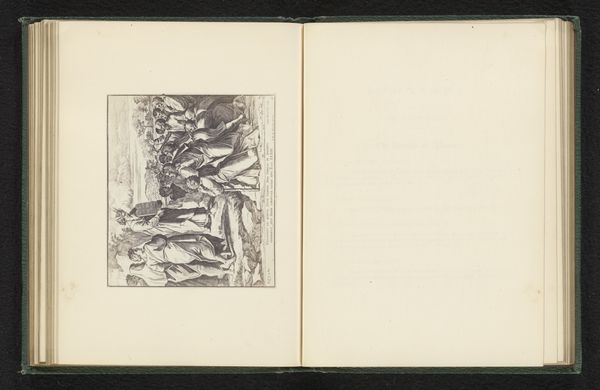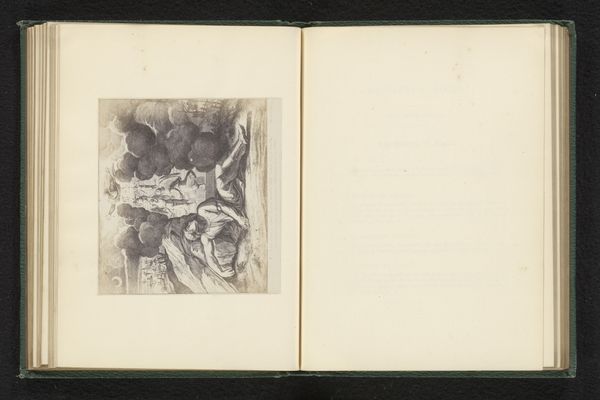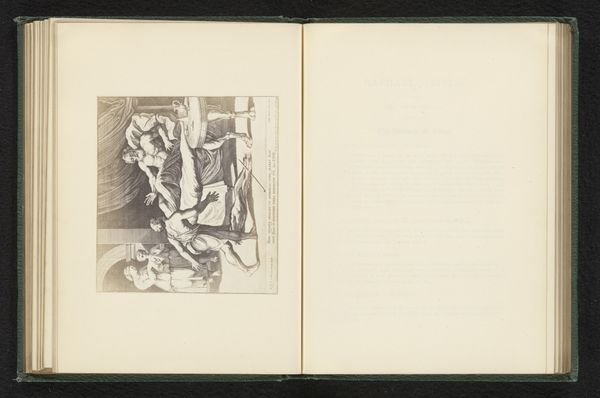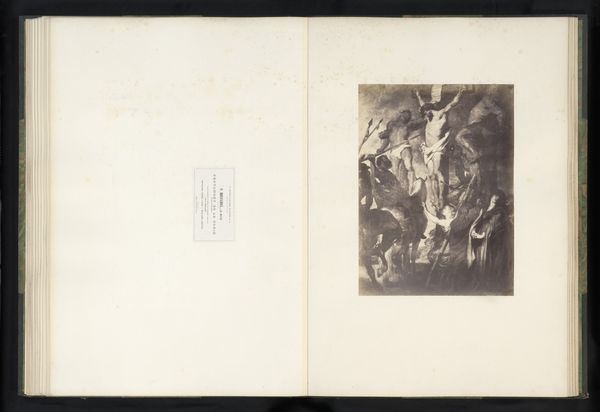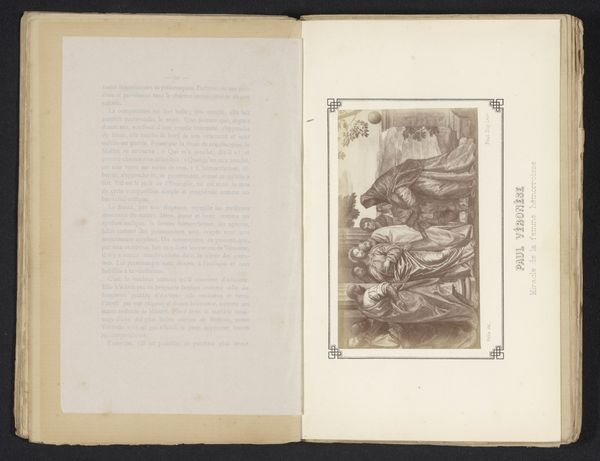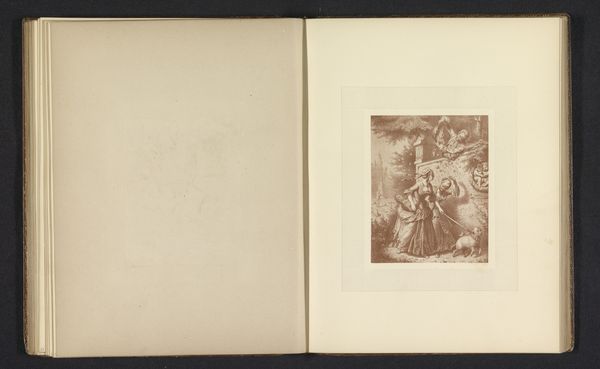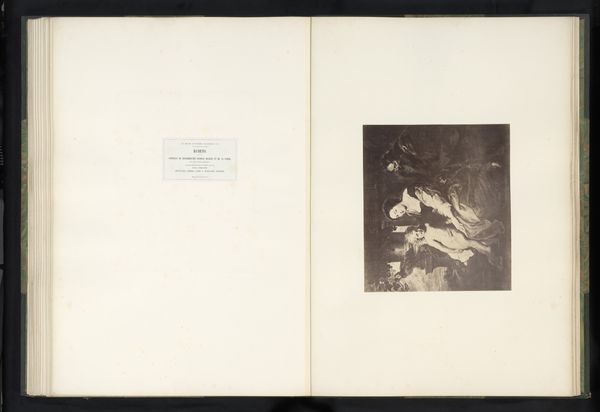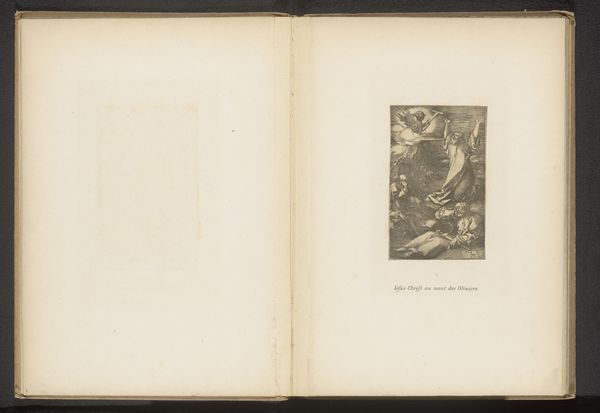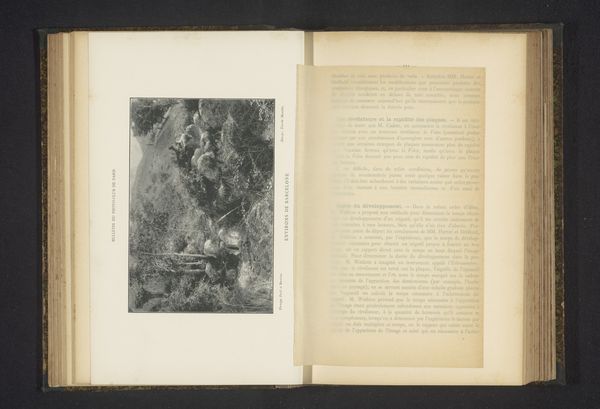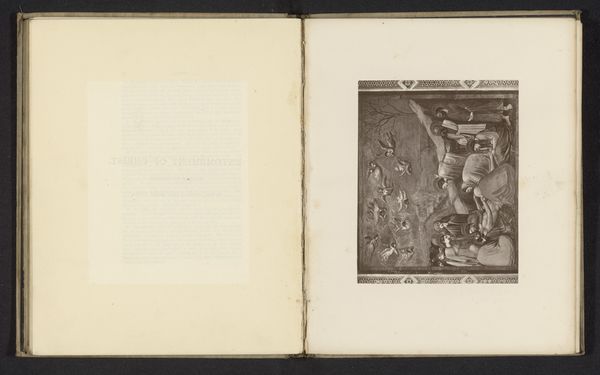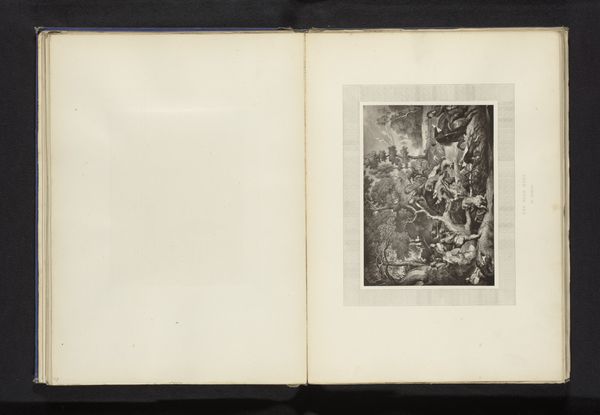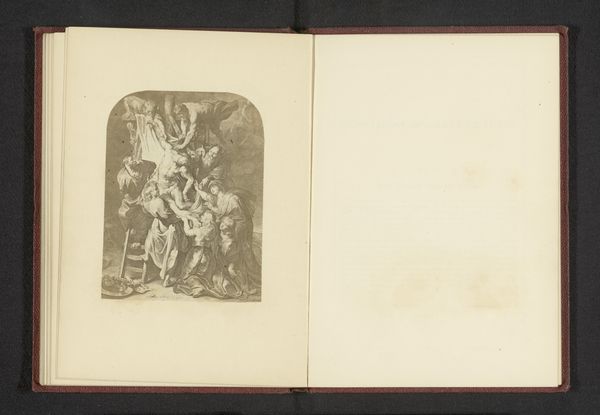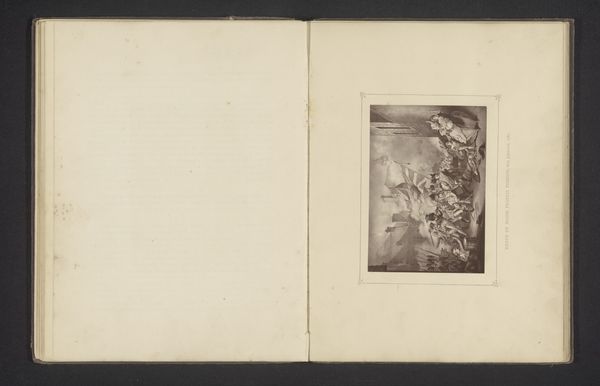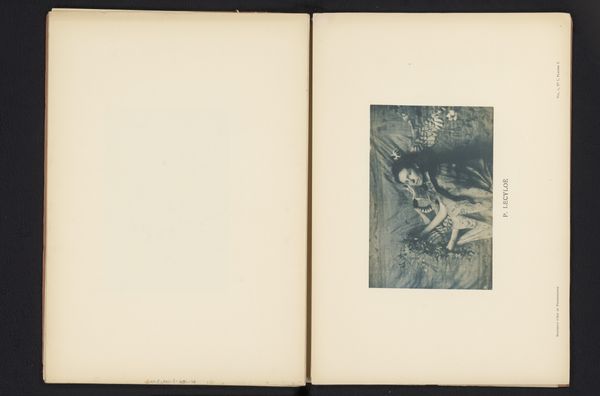
Fotoreproductie van een tekening van jagers en jachthonden in Udhagamandalam before 1880
0:00
0:00
drawing, print, engraving
#
drawing
# print
#
landscape
#
sketch
#
genre-painting
#
engraving
#
realism
Dimensions: height 98 mm, width 133 mm
Copyright: Rijks Museum: Open Domain
Editor: Here we have a photorealistic reproduction of a drawing, a print actually, made before 1880, entitled 'Fotoreproductie van een tekening van jagers en jachthonden in Udhagamandalam'. It seems to be in a book of plates and features a hunting scene. The flurry of lines in this drawing depicting a "Doty Hunt 'Run to Ground'" give it an energetic feel. I’m interested in understanding it better; how do you interpret this work, considering its materials? Curator: Well, immediately I'm drawn to the production process itself. This isn’t just a drawing; it's a photographic reproduction, existing within a book – likely destined for mass consumption. The drawing, originally a unique work perhaps, is transformed into a repeatable commodity. Think about the labour involved: the artist, the photographer, the printer, the binder... All contributing to the final object. Do you think this mass production changes our understanding of the image's original intent? Editor: I suppose it democratizes the image, making it accessible to more people. The context also shapes it, being part of a book shifts it from art object to document, or illustration perhaps. It brings questions about authorship. The caption reads 'Doty Hunt Run to Ground' is very interesting, it means the author is trying to show it as an iconic hunt. Curator: Precisely! The photographic print flattens hierarchies, presenting "art" within the realm of everyday, printed material. And look at the subject matter – hunting. This depicts a specific leisure activity tied to colonial India. This work highlights the complicated relationship between artistic skill, material reproduction, and the social structures of its time. Is the purpose to be reminiscent or to convey any deeper meaning? Editor: Thinking about the print’s journey, from drawing to reproduced image in a book… it highlights how context and methods of production can shift our perception entirely. I now perceive how each step of this artwork, as an object, is as relevant as its representation of the hunt. Curator: Exactly, paying attention to materials and processes reveals the layers of meaning embedded within even seemingly simple images. It allows us to rethink traditional artistic boundaries and really understand this artwork.
Comments
No comments
Be the first to comment and join the conversation on the ultimate creative platform.
